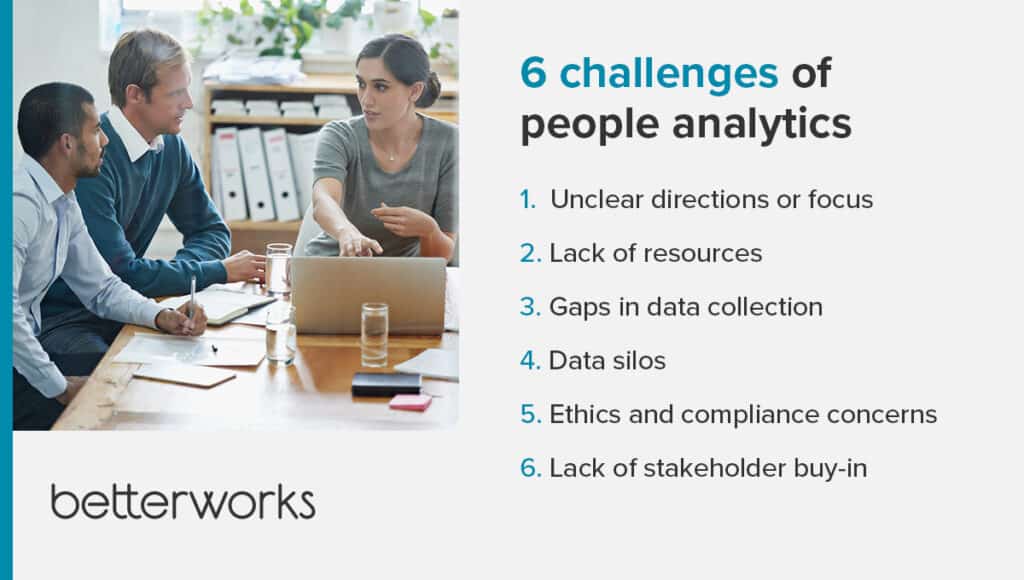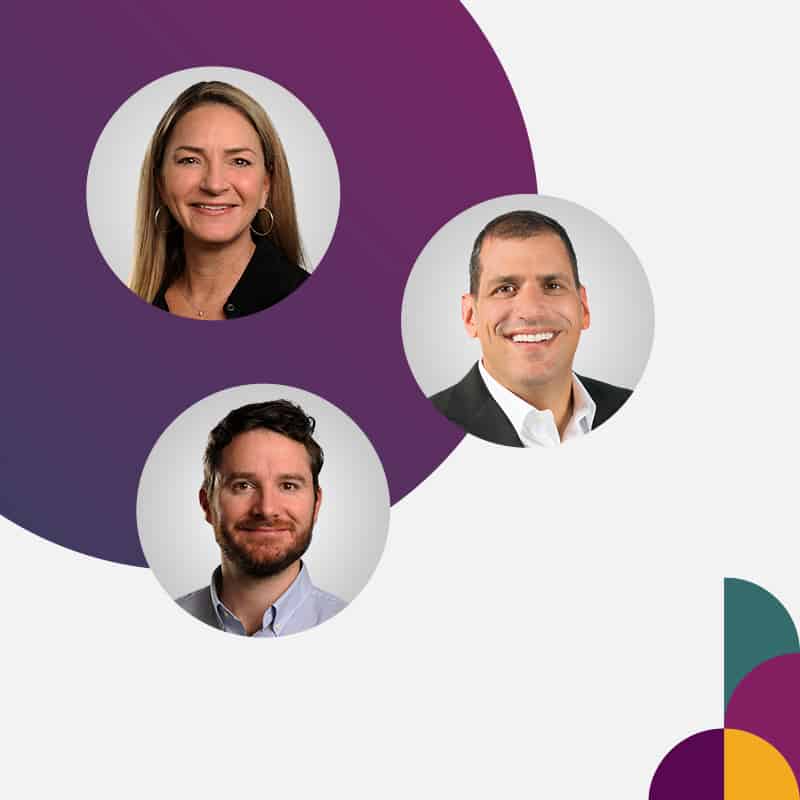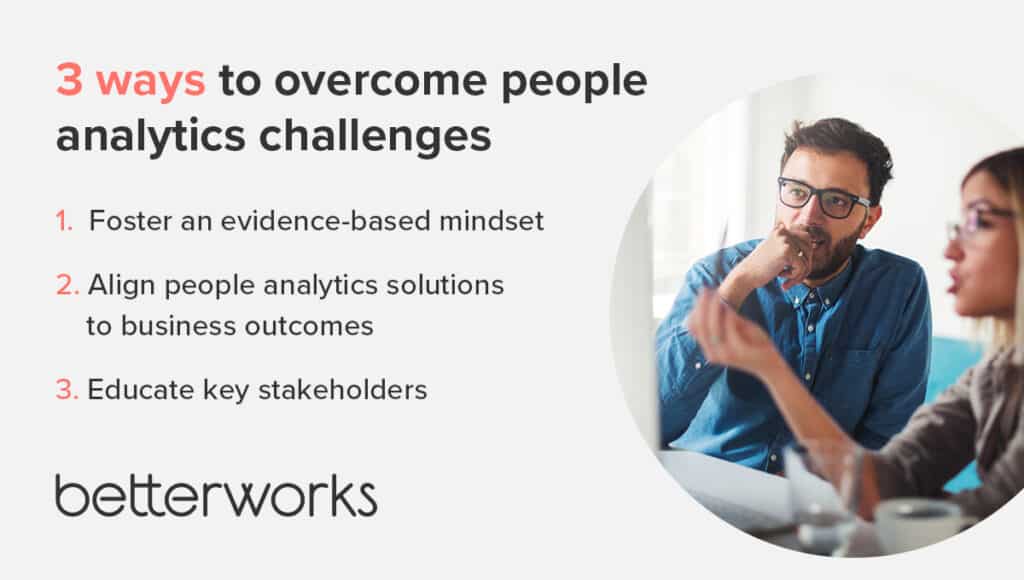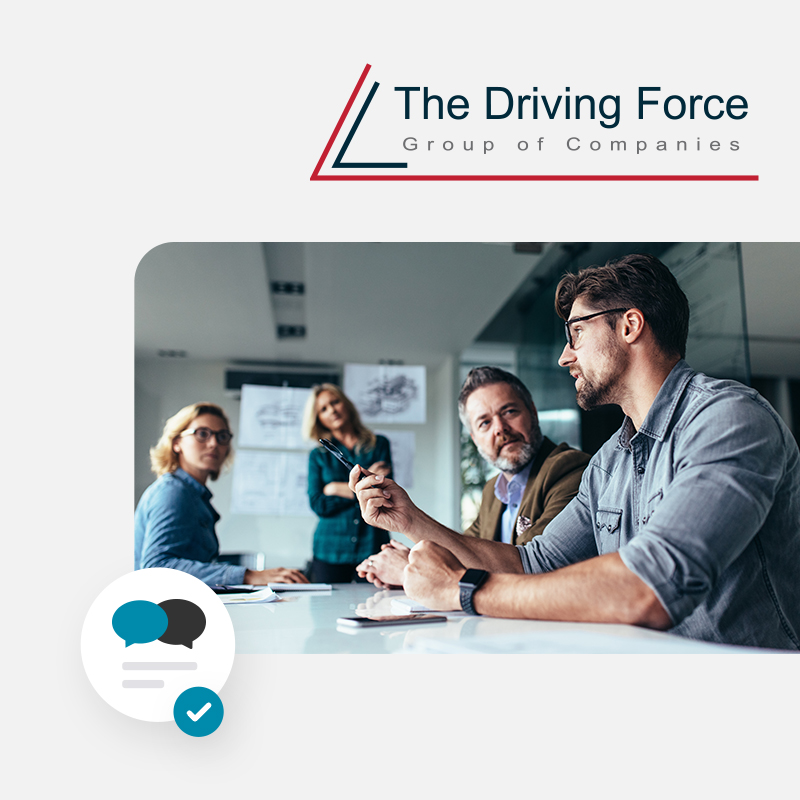People analytics is quickly becoming integral to how HR leaders build modern workplaces. Incorporating data science into talent management offers a unique opportunity to impact the business, but realizing these potential gains requires HR to recognize and overcome the key challenges of people analytics.
According to Sapient Insights Group’s annual HR systems survey, more organizations are planning to invest valuable resources into people analytics technology in 2023. Simply having the tools and resources you need for a successful people analytics program, however, won’t guarantee your success.
Learn about six common challenges when implementing people analytics and how HR leaders can overcome them.
Why is people analytics essential for your business?
If you’re not using people analytics, your competitors probably are. Survey data compiled by the Society for Human Resource Management suggests that people analytics is a fast-growing area of HR investment and hiring.
And with good reason: Implemented strategically, an effective people analytics program provides the insights you need to solve your most pressing HR problems. By leveraging data-driven insights, HR leaders and other business executives can make decisions that are more informed, targeted, and grounded in the larger context.
People analytics provides a comprehensive view of employee performance, engagement, and development, and how these metrics intersect with other critical business measures. Talent leaders interviewed by Forbes said they use people analytics to support diversity hiring, retention, succession planning, and more.
HR needs every edge possible in an era where the function is more strategically important than ever. Since experiencing disruption from the pandemic and the Great Resignation, more and more executives are acknowledging HR’s strategic value. Today, HR remains essential in helping organizations manage economic uncertainty, a tight labor market, and the continuing evolution of hybrid and remote work — and investing in people analytics can help you achieve positive results faster.
Breaking down 6 top people analytics challenges
Effectively deploying a people analytics program requires several key elements to be successful. HR leaders need strong data collection, the right systems and people to analyze that data, and the resources and leadership buy-in necessary to implement the recommendations gleaned from the data. Here are six key challenges HR teams face when using people analytics.
Unclear directions or focus
While HR analytics plays an important role in organizational decision-making, it’s not an instant cure. Too often, HR departments try to solve all of their issues — attrition, retention, quality of hire, and more — all at once. Sometimes this occurs because the HR team is too ambitious, but other times it reflects a lack of clear strategy.
Take a step back and look at what you hope to achieve with people analytics. Look at specific opportunities within the business or problems that hamper key operations. For instance, if turnover is too high, try examining turnover in business-critical roles first. Starting with a specific department or job role, such as “accountant,” can allow for experimentation before rolling out a solution to the entire organization.
Lack of resources
People analytics requires the ability to collect and access HR data in large quantities. Technology is the foundation of these efforts. Without the right tech, you’ll struggle to collect data, much less quickly analyze it.
All resources ultimately flow from the company budget. The cost of acquiring data, employee expertise, and technology can add up quickly. An insufficient budget will limit the scope of your people analytics program.
Lack of expertise or training is another potential resource problem. You need data scientists and data engineers with expertise in people analytics practices — and hiring them from the outside takes time and money. Many other employees will need training to understand how to collect data or interpret the findings when making business decisions.
Recommended read: Paul Rubenstein: ‘HR Data Is Business Data’

Gaps in data collection
People analytics requires robust, complete datasets to generate valid and useful recommendations. But it’s easy for gaps to emerge that jeopardize these efforts. For example, improving performance management is difficult, if not impossible, if 20% of your managers aren’t tracking employee check-ins and performance conversations in your goal-setting software.
Incomplete data means fewer insights and less informed, less accurate decision-making. Making key people decisions with inaccurate data increases the risk of costly mistakes, missed opportunities, and reputational damage.
Assess your data blindspots and consider how you’ll fill the gaps. If you aren’t capturing sales team conversations with clients or call center interactions with customers, for example, it’s nearly impossible to objectively assess the quality of service provided. In this case, the gap could be technological (not having a call center software that records customer conversations or allows for collecting critical information) or procedural (sales representatives aren’t logging their calls). Either way, you can’t solve the challenge of incomplete data without fixing the underlying problem.
Data silos
Data silos arise when data is segregated by department or system or is otherwise inaccessible to some people within the organization. Most silos are unintentional, and employees often don’t know what information they’re missing out on.
Data silos lead to inconsistencies, as every department tracks, stores, and reports data differently. Reconciling these disparities takes time and resources that aren’t always available. Likely, tearing down silos is costly and time-consuming, whether through implementing new technology or manually linking data across systems.
Data silos limit HR’s ability to generate actionable insights that apply across the organization. At best, you might focus on particular business units or job roles where the data is complete and accessible. But that fragmentation can lead to worse outcomes and inequities for siloed areas of the organization, among other problems.
Ethics and compliance concerns
The collection and use of workforce data must meet ethical, legal, and compliance standards. For example, people analytics teams must protect employee privacy, keep data secure, and avoid using data for discriminatory hiring and promotion decisions. Many industries face additional regulations related to reporting and security.
People analytics teams must account for the ethical implications of decisions based on the data collected. The use of employee data must be fair and unbiased and respect the rights of the individuals whose data is being used.
The algorithms you use in your people analytics work are also subject to ethical considerations and, increasingly, government scrutiny. Algorithms or the data fed to them can be biased and potentially lead to unfair outcomes. If your people analytics approach relies on flawed or biased data, it can lead to employment decisions that spur legal challenges.
Lack of stakeholder buy-in
For people analytics to be truly successful, HR teams need the support of key stakeholders, including the board, senior executives, and managers.
If these stakeholders don’t understand why people analytics is important and how it’ll help the business, they’re less likely to support such efforts with budget, resources, or participation. Find out what concerns these stakeholders have. Perhaps they’re curious about how data privacy and security are handled. They might wonder why people analytics is an improvement over existing processes — and how quickly the organization will realize a return on investment.

3 effective strategies for overcoming these challenges
HR leaders can overcome people analytics challenges through comprehensive planning, ongoing communication with key stakeholders, and a focus on why the business will benefit. People analytics isn’t just an internal HR initiative; it’s a way to make the entire organization stronger and more resilient.
Foster an evidence-based mindset
People analytics relies on data to help organizations make informed decisions supported by evidence. Training managers and HR team members to read data prepares the key players in your people analytics program to apply those insights successfully.
An evidence-based mindset encourages HR professionals to collect and analyze people data to make informed decisions. This mindset covers every stage of people analytics, starting with assessing and collecting data related to recruitment, performance management, employee engagement, and other aspects of HR.
An evidence-based mindset helps HR leaders better understand employee needs. Gather employee engagement and performance data and get feedback through surveys and other methods to learn what your workforce needs most.
After launching your people analytics program, establish milestones to evaluate its effectiveness. By using data to inform decision-making and measure results, HR leaders ensure their workforce decisions are based on evidence and are in the organization’s best interests.
Align people analytics solutions to business outcomes
Let the business guide you during your people analytics goal-setting process. Start by understanding the top-level business goals. If you use a modern approach to corporate goal-setting, every department, team, and individual will understand how their work supports larger goals and their progress against those goals. Use those goals to identify what you’ll focus on and which metrics you’ll use.
Once you have identified and tracked these metrics, use people analytics solutions to analyze the data and make better decisions. For example, you might analyze recruitment and retention data to identify areas of improvement or create predictive models to forecast future trends. Or, you could look at productivity data and its precursors to determine how work is getting done and adjust your performance management processes.
The budget, resources, and timeline available will also shape your people analytics approach. Identify opportunities that align with business goals and will yield the greatest impact within the constraints of your resources.
Recommended read: Why Data ‘Is an Incredibly Powerful Tool for Augmenting Our Intuition’

Educate key stakeholders
Change management is a big part of implementing people analytics. Support healthy change by educating stakeholders on the value of investing in and applying people analytics. Getting buy-in isn’t just about overcoming objections. You want to get stakeholders excited about the transformative potential of people analytics for making better workforce decisions that improve employee and business performance.
Invite key stakeholders to discuss the potential benefits of people analytics and how you’ll implement it in the organization. Share details such as the timeline, budget, and other required resources.
Offer ongoing support and training for those who’ll use the system. Employees should know where they should go to give feedback and ask questions without fear of criticism or reprisal. At every stage of people analytics projects, keep stakeholders informed of progress and results.

Choosing the right technology for people analytics
The most crucial factor in choosing the right technology for people analytics is understanding your business needs and the data you want to collect. From there, apply considerations such as your budget, your organization’s size, and your data’s complexity.
When researching software vendors, consider factors such as cost, scalability, user-friendliness, customizability, and ongoing levels of customer support. Confirm whether the solution connects with your existing HR systems or whether you’ll need custom support. Ask to talk with current users of such technology to learn how they use the solution and why they like it. Finally, ensure this solution complies with any relevant regulations governing your business. The right technology partnership, such as that between Betterworks and Visier, will be a powerful tool
The future of people analytics in HR
People analytics is a powerful tool that enables HR to make proactive, data-driven decisions in a fast-changing business environment. HR’s earned its seat at the table, and now it’s time to show how data-driven workforce planning and decision-making drive business outcomes and competitive advantage.
When you understand the challenges of people analytics, you can plan better, anticipate stakeholders’ questions, and reduce the trial and error required before seeing positive results.
Learn more about the importance of people analytics and how to improve engagement.
Use people analytics to improve engagement






